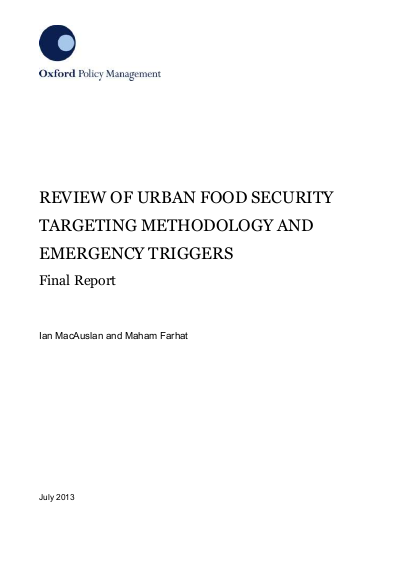
Over the last five decades emergency responses to humanitarian crises have been concentrated on developing rural-based skills and tools. Increasingly large numbers of people live in urban areas in developing countries, and with these increasing population concentrations come higher risks of urban emergencies. It is therefore important to understand the differences between rural and urban Emergency Food Security and Livelihoods (EFSL) programming and to establish adapted assessment methodologies and programme responses for urban areas. This document is aimed at field practitioners to assist in capacity building and guidance during emergency responses in urban areas, focusing on food security, livelihoods, and nutrition. It covers two areas: ? Emergency triggers in urban areas. o Collate (and where necessary further analyse) indicators which have been utilised by Oxfam GB, Concern Worldwide and ACF. o Compile a list of suitable indicators for urban contexts. o Recommend which indicators should form the basis of urban emergency triggers processes. ? Targeting emergency responses in urban areas. o ”Summarise the strengths and weaknesses of three different targeting approaches which are utilised in urban humanitarian responses (community based targeting, proxy means tests, ‘weighted’ indicator methodology) according to the context, resources and capacity, and objective of the intervention.
Additional Downloads
Resource collections
- Accountability to affected populations (AAP)
- Evaluating humanitarian action
- Innovation
- Monitoring and Evaluation (M&E)
- Monitoring of humanitarian action
- UN Habitat - Urban Response Collection
- Urban Response - Urban Crisis Preparedness and Risk Reduction
- Urban Response Collection - Community Engagement and Social Cohesion
- Urban Response Collection - Economic Recovery
- Urban Response Collection - Environment and Climate Change
- Urban Response Collection - Housing, Land and Property
- Urban Response Collection - Urban Crisis Response, Recovery and Reconstruction
- Urban Response Collection - Urban Resilience
- Use of evaluation evidence